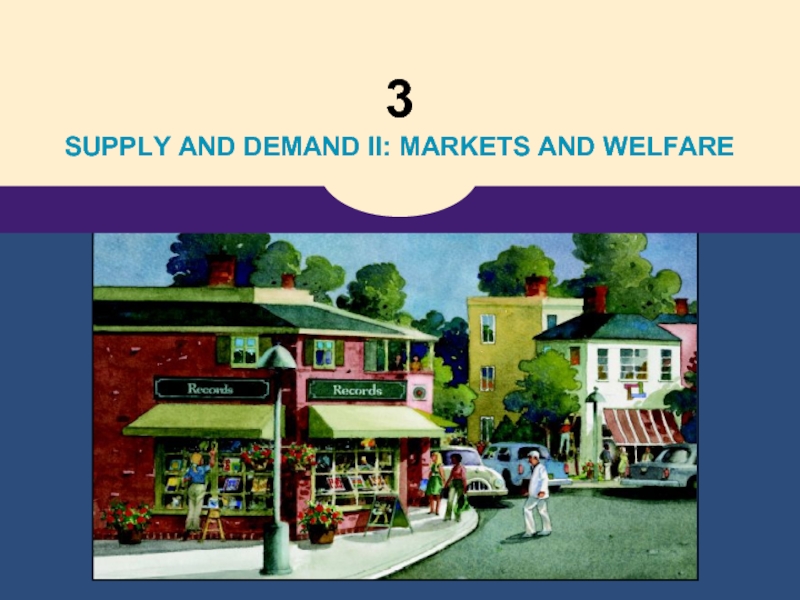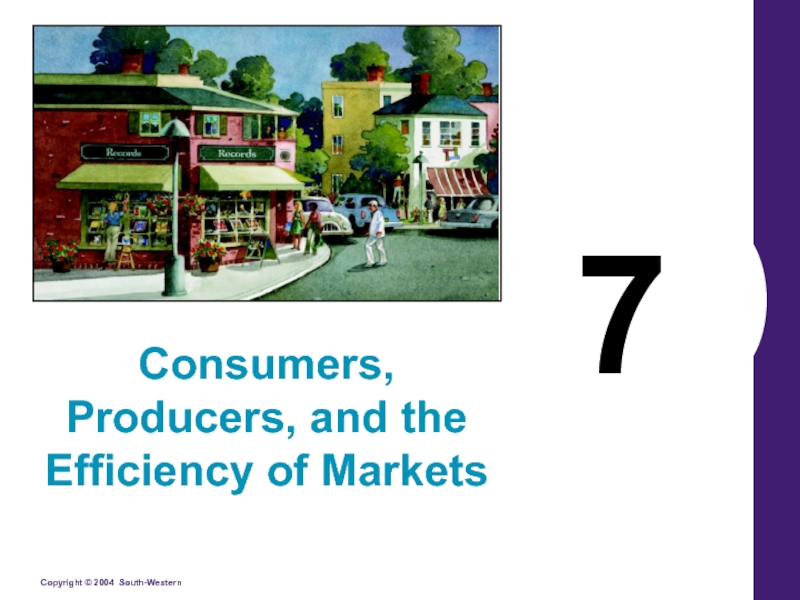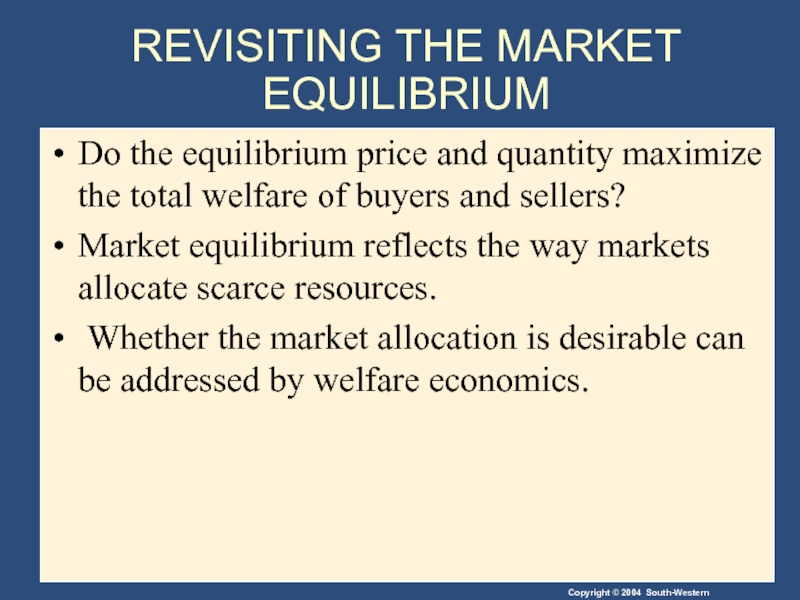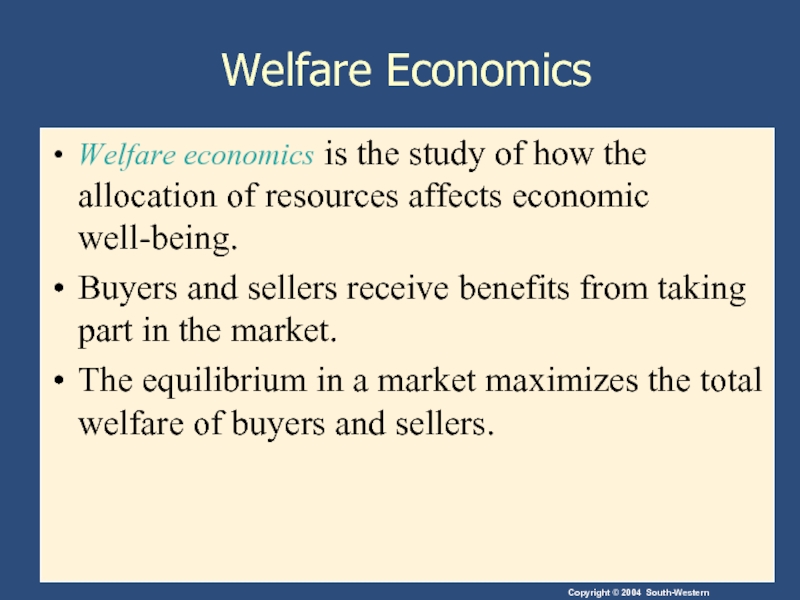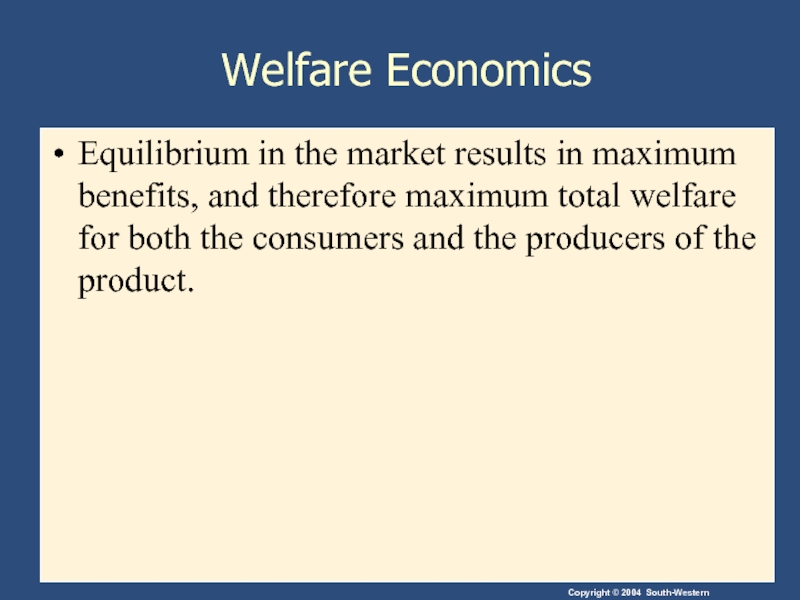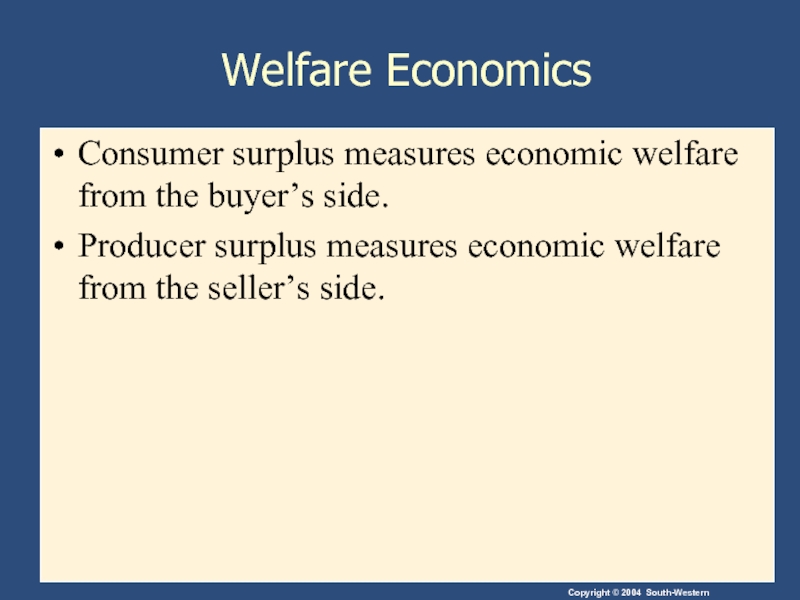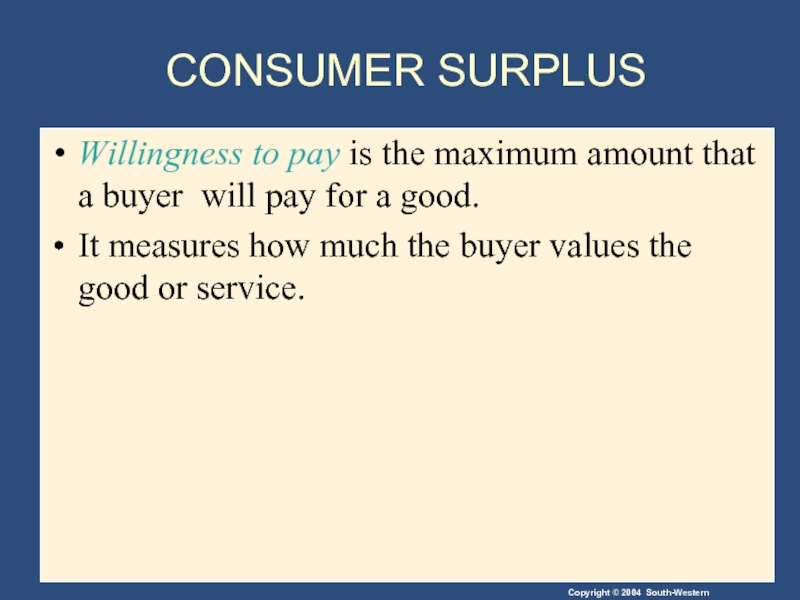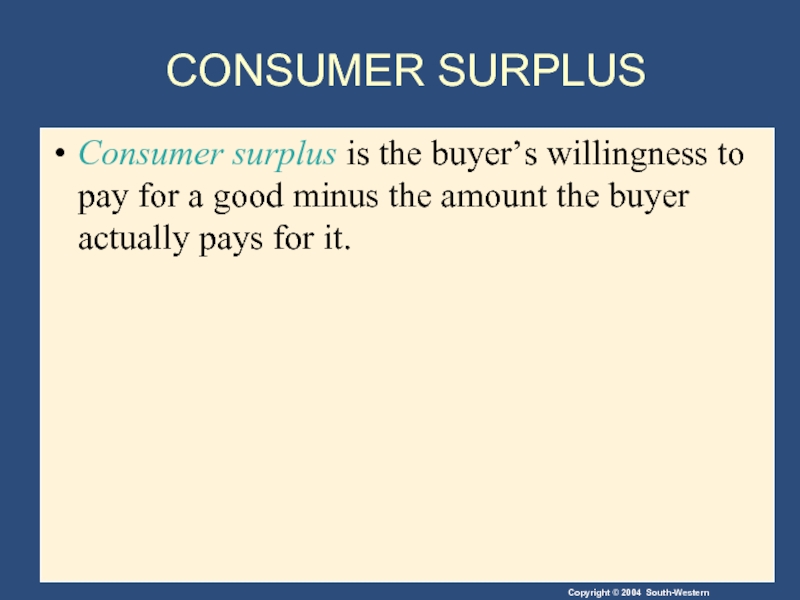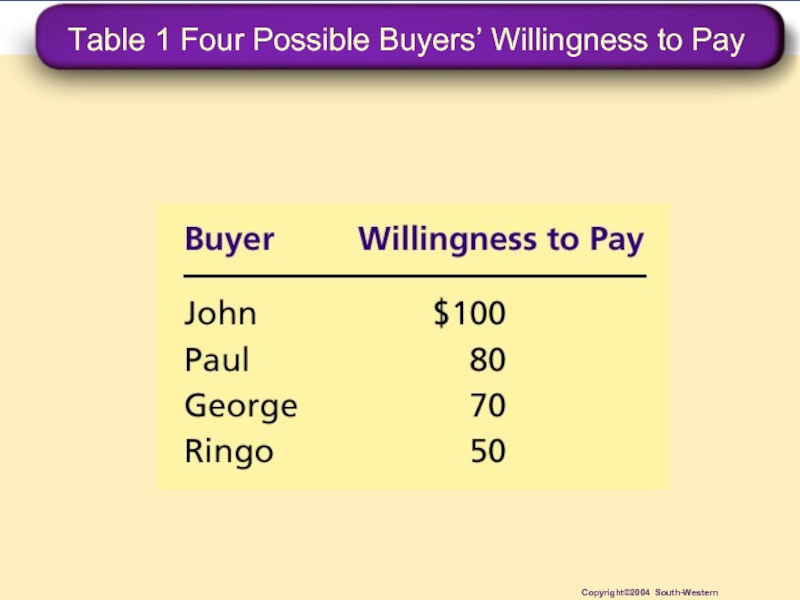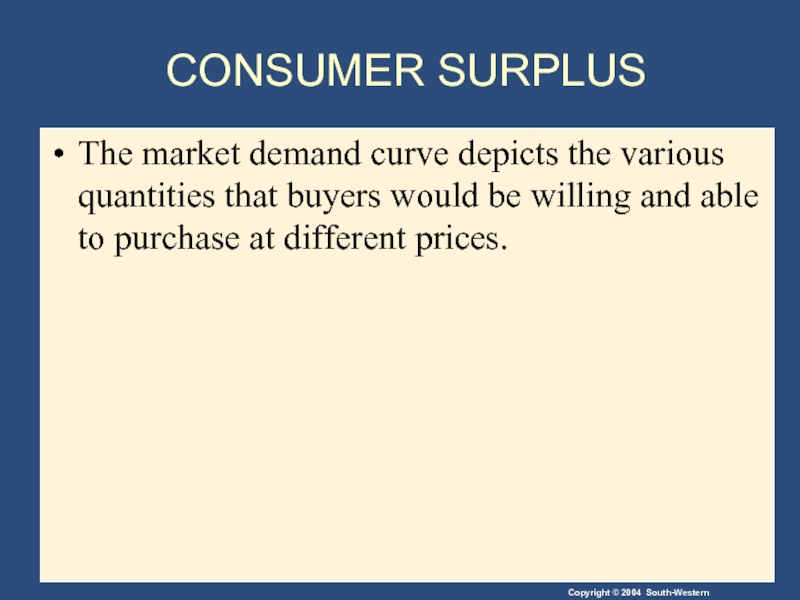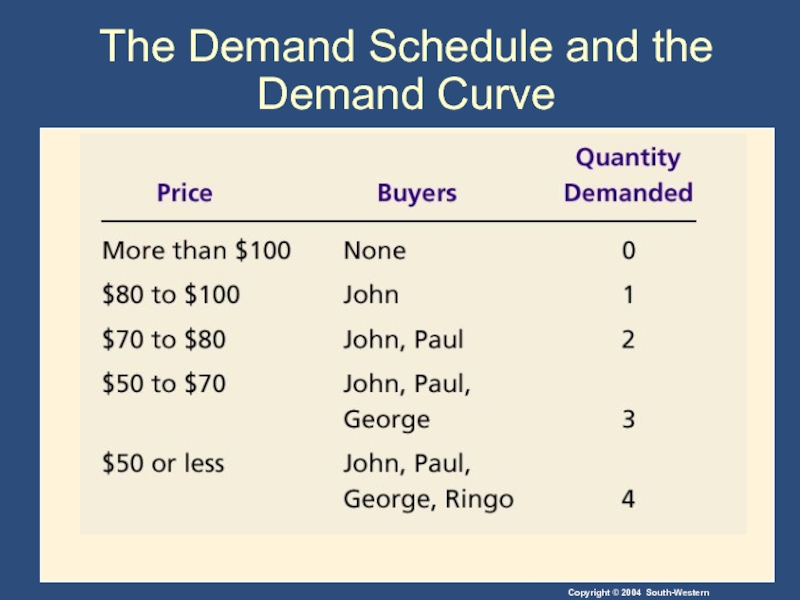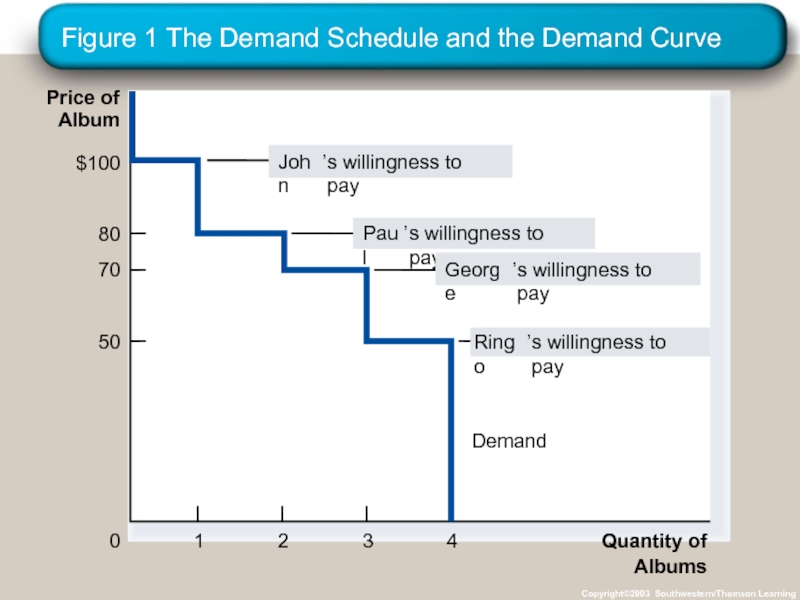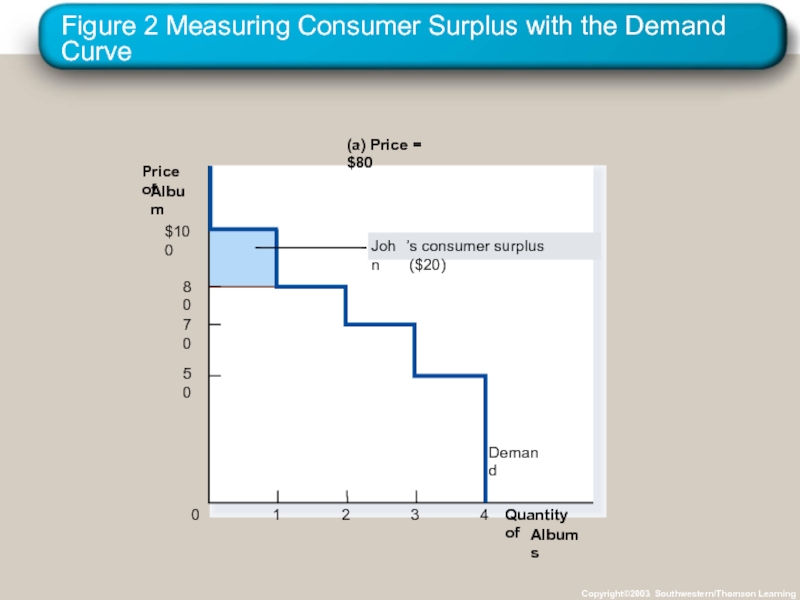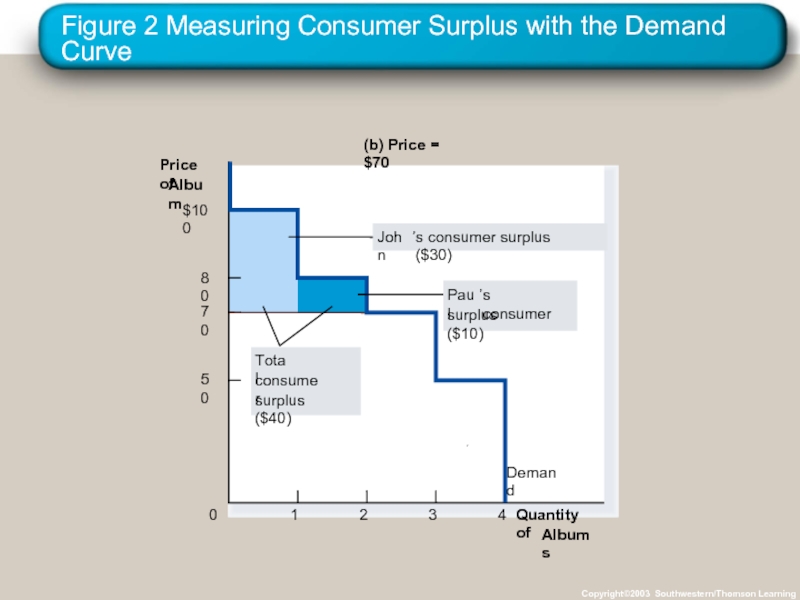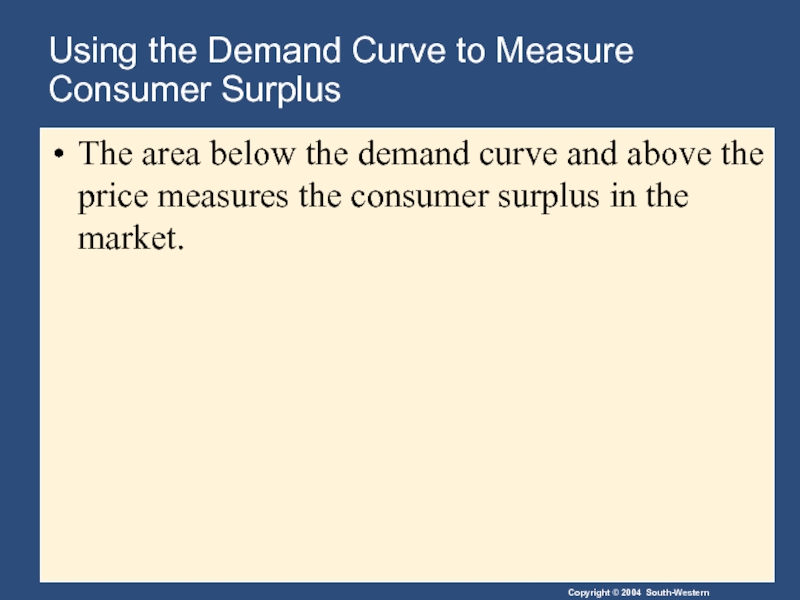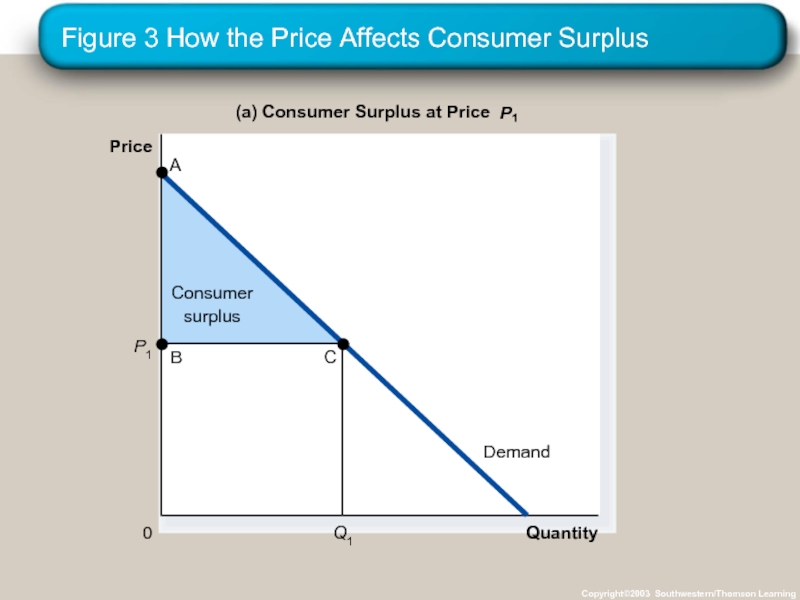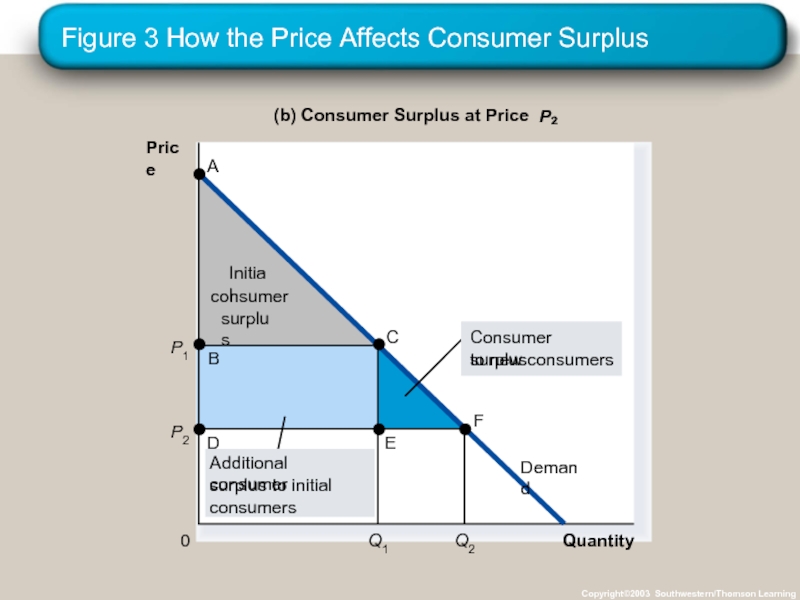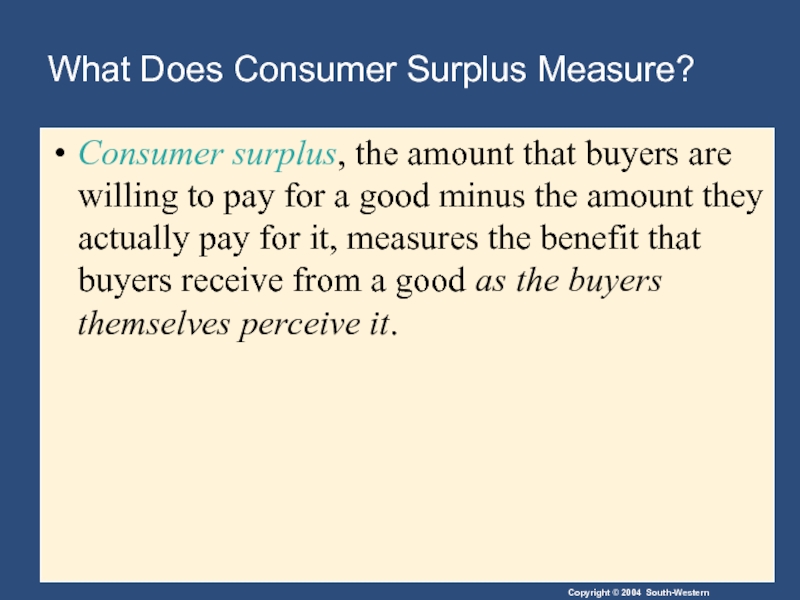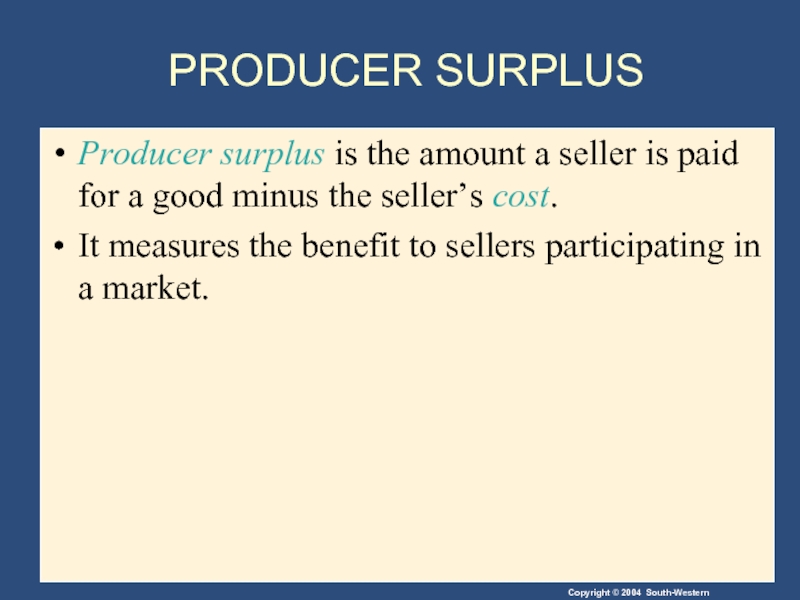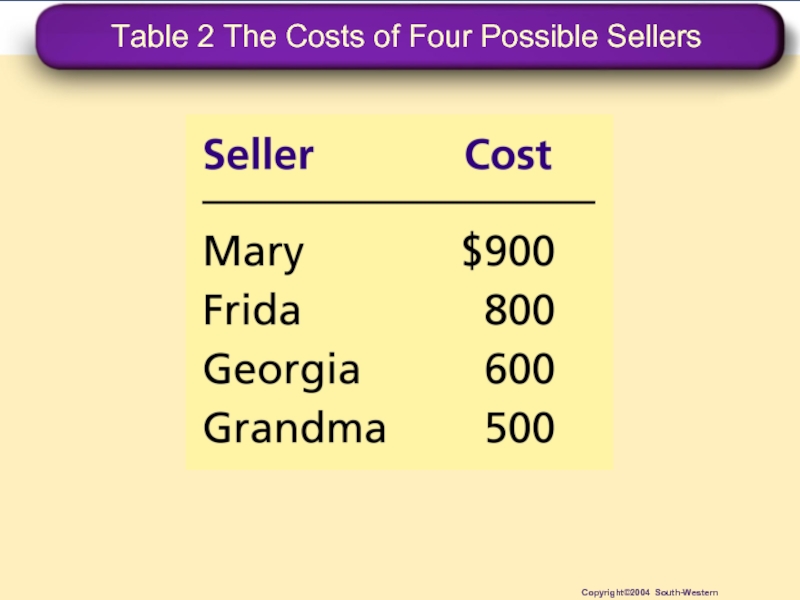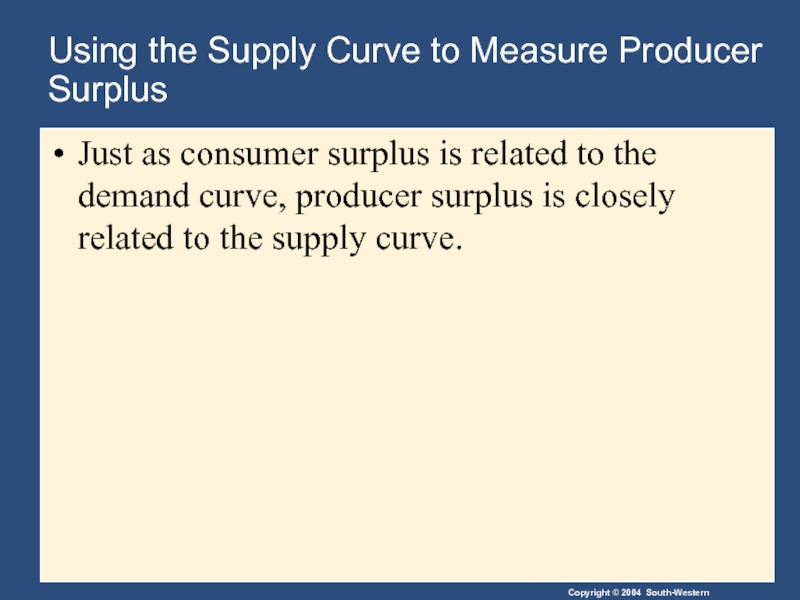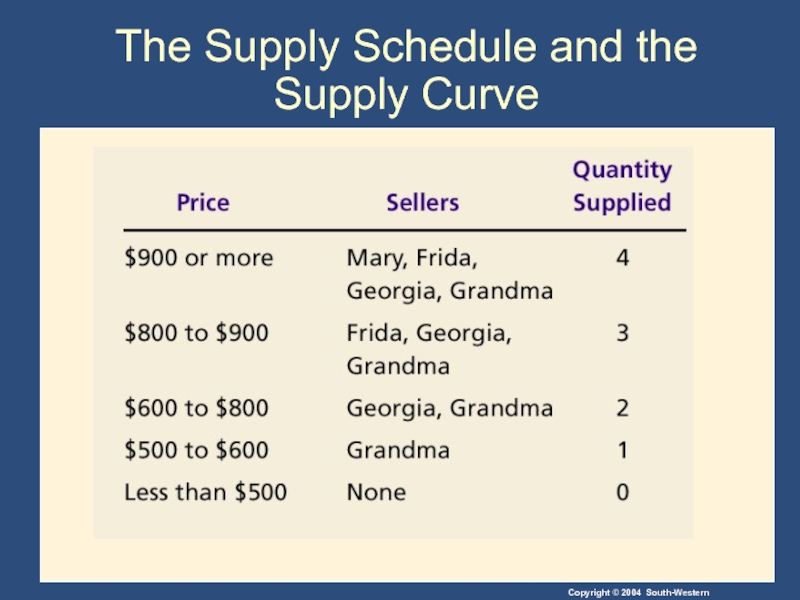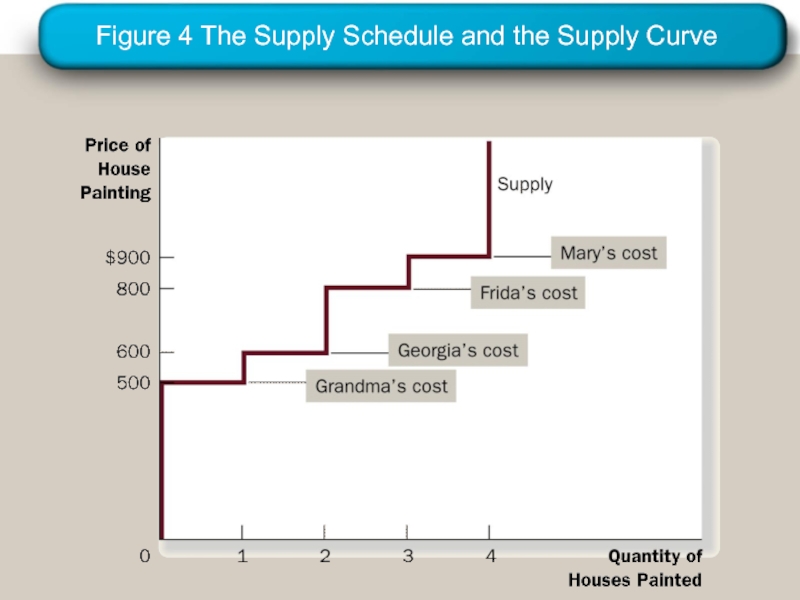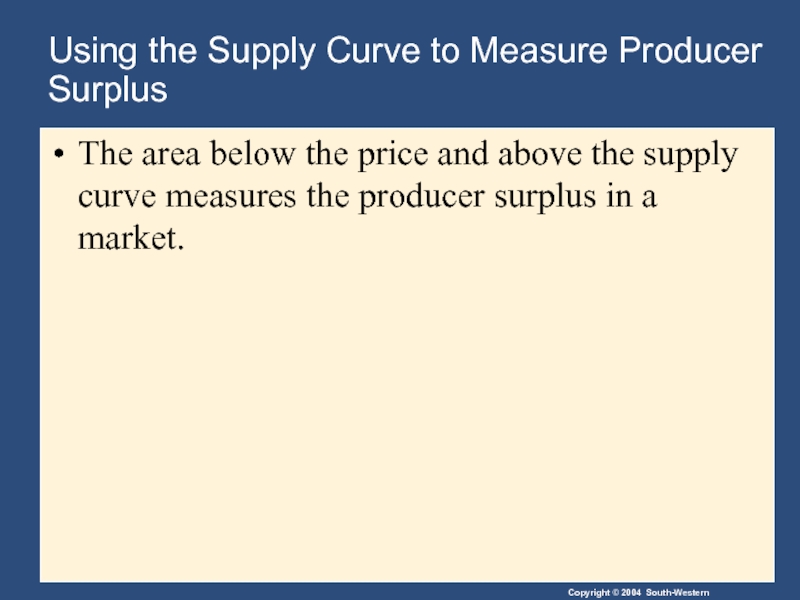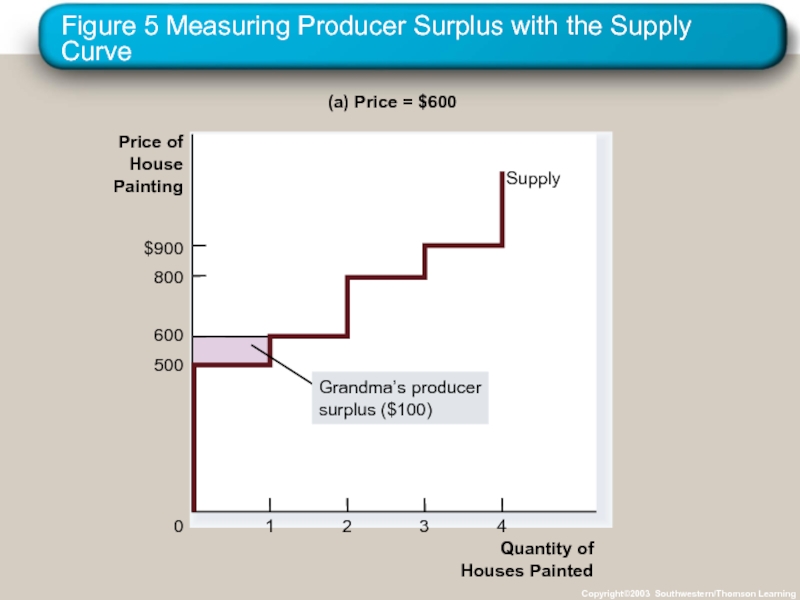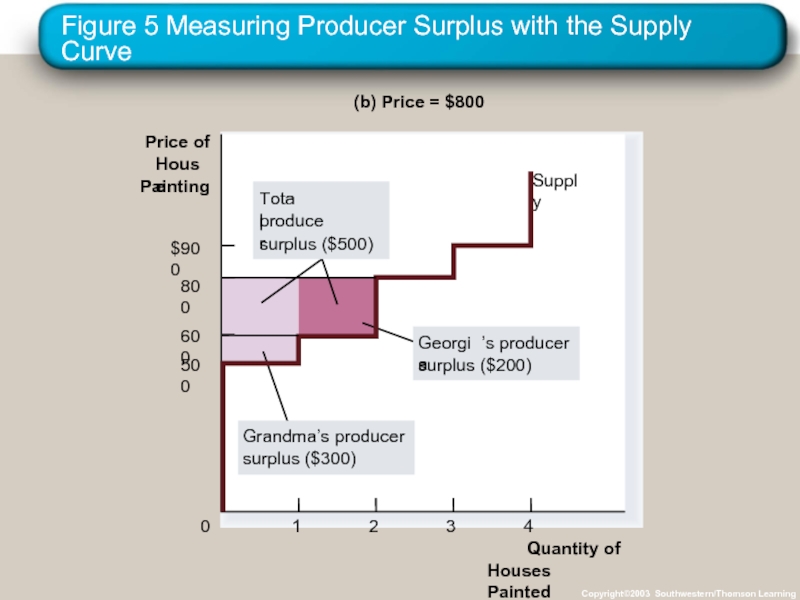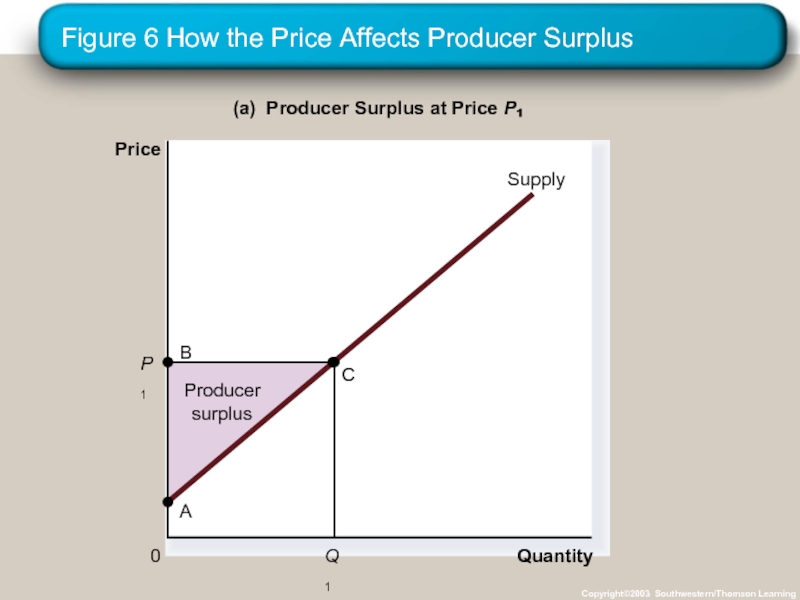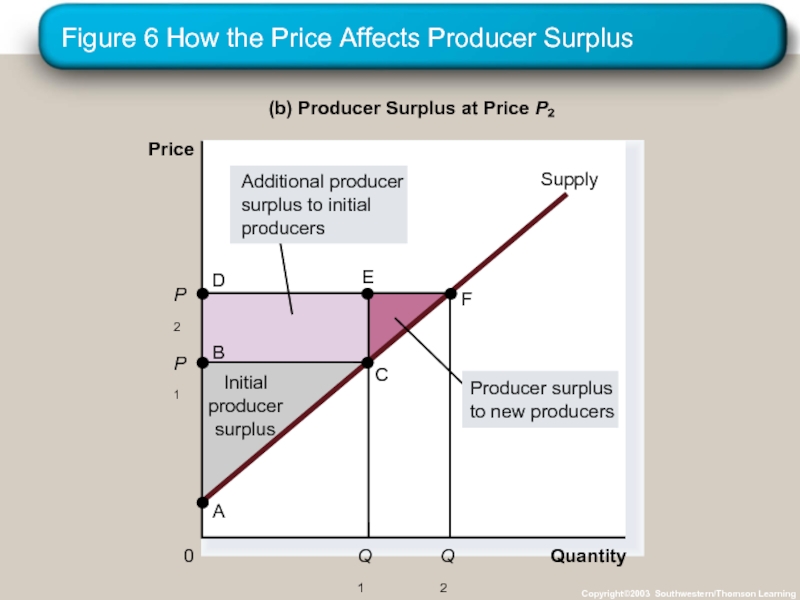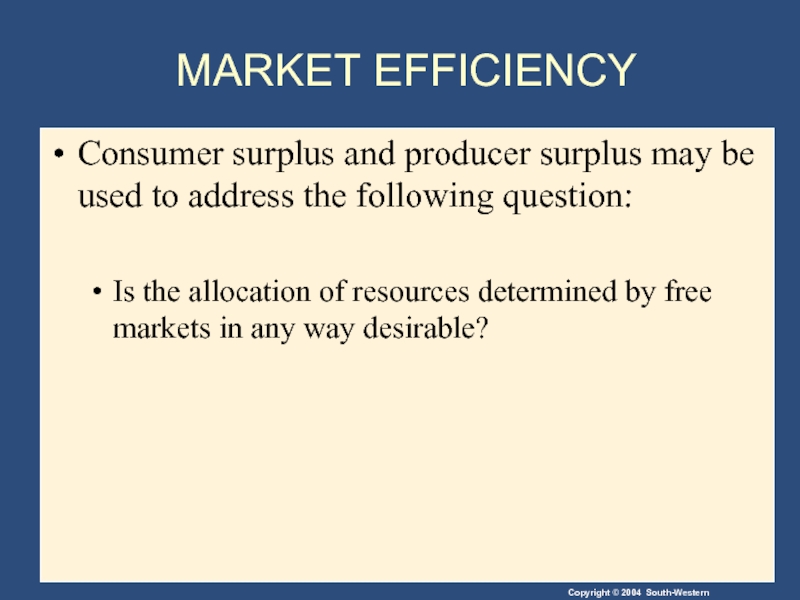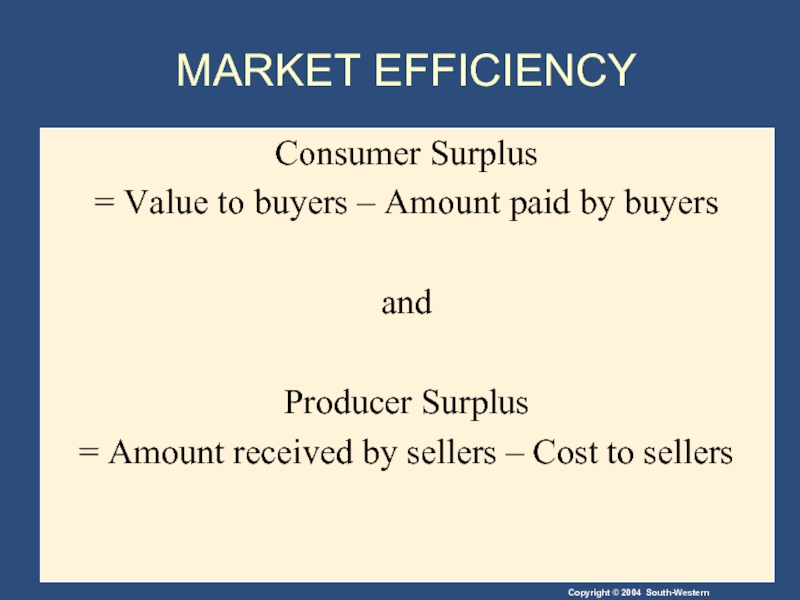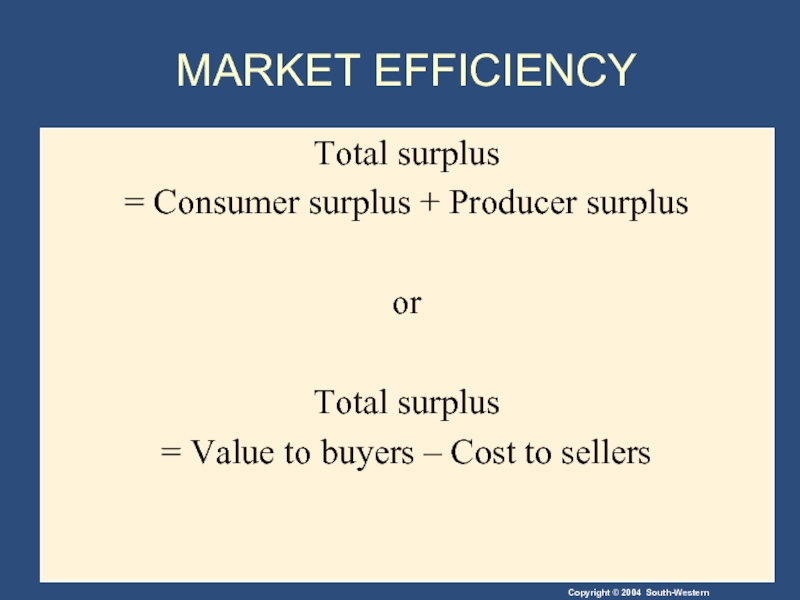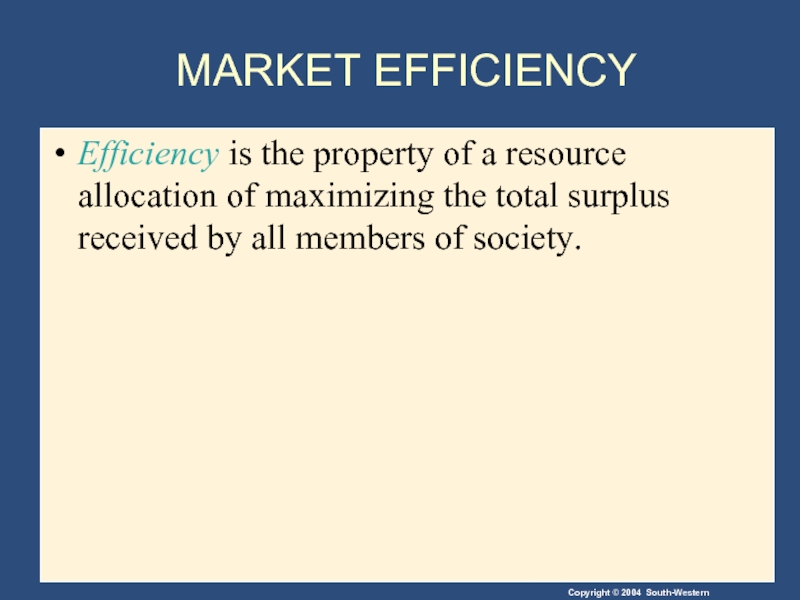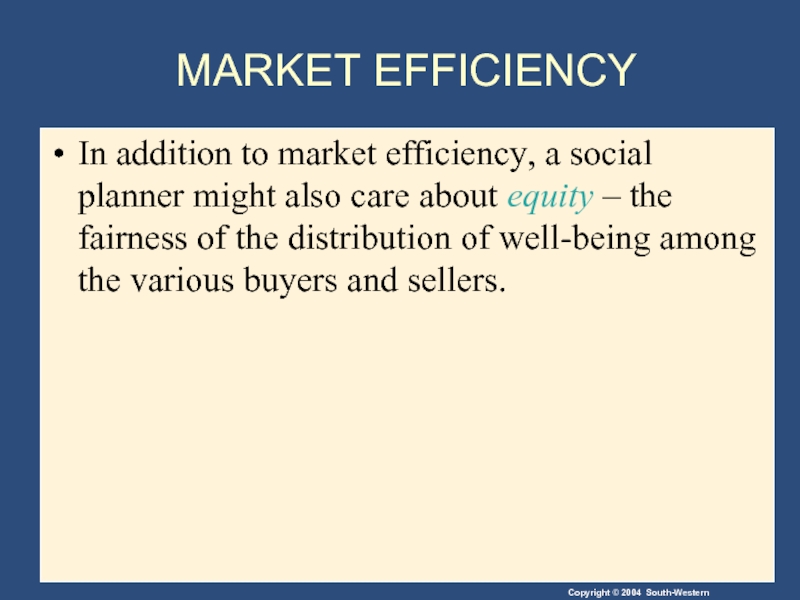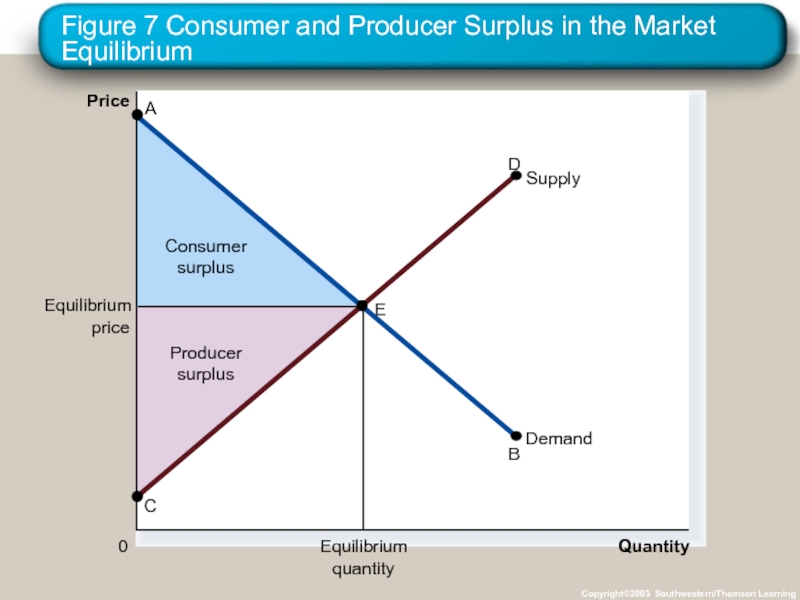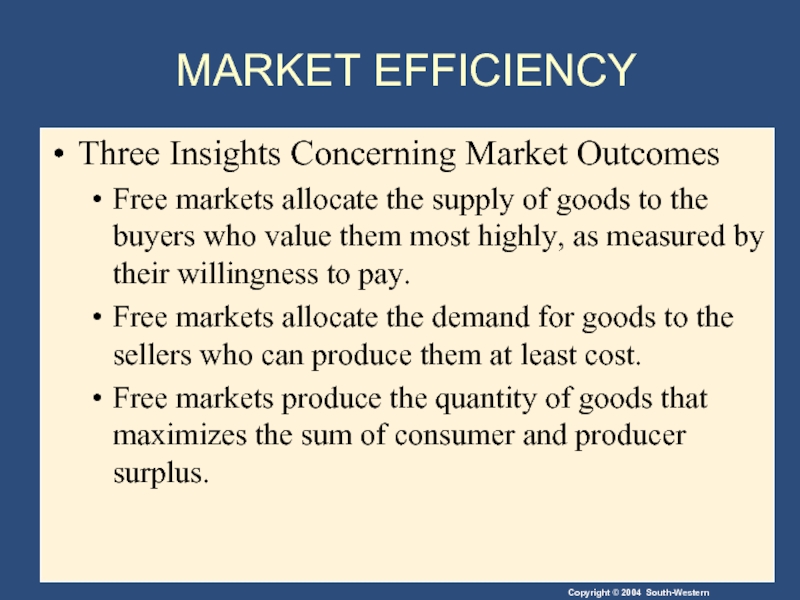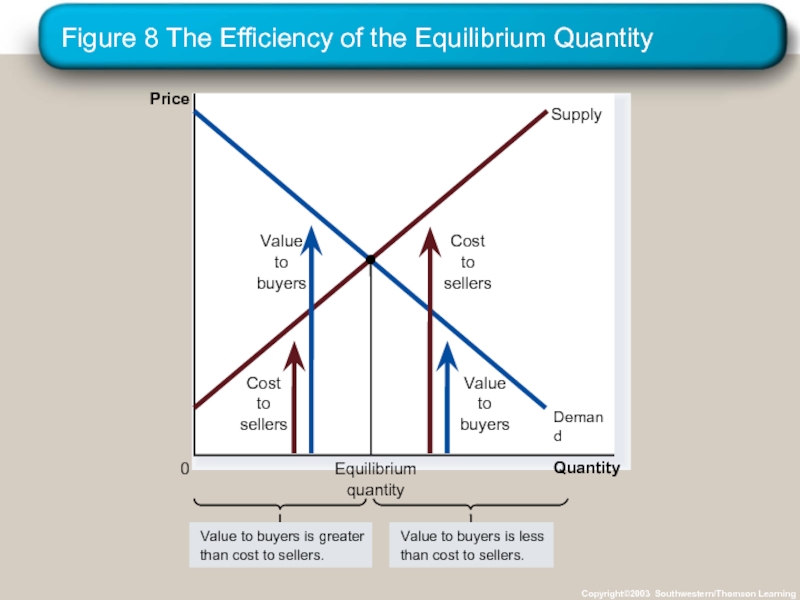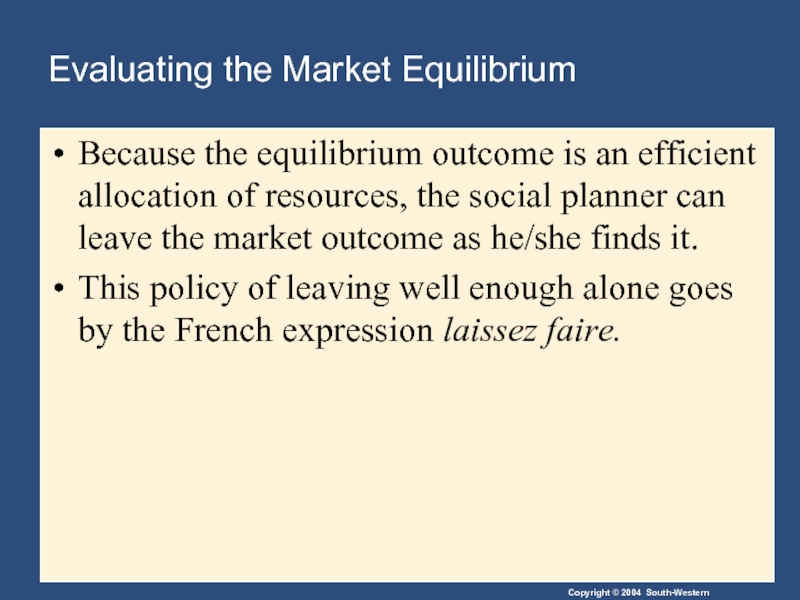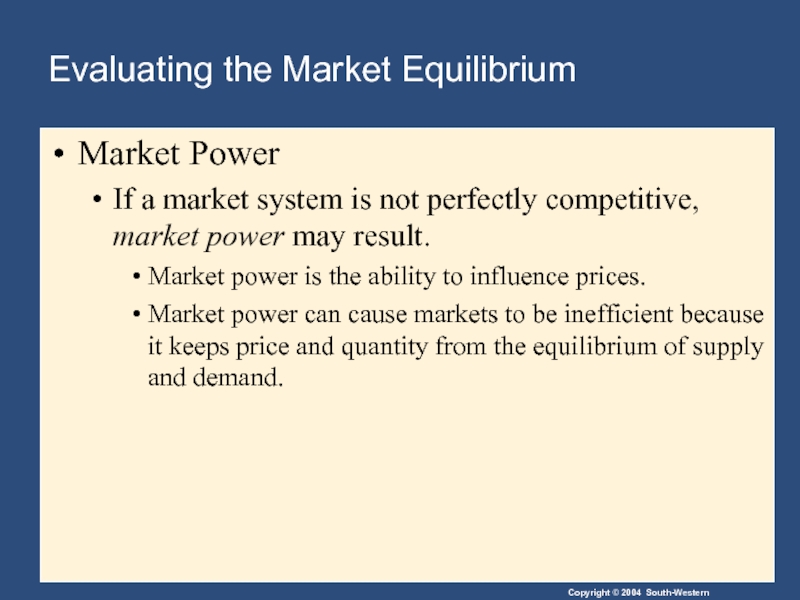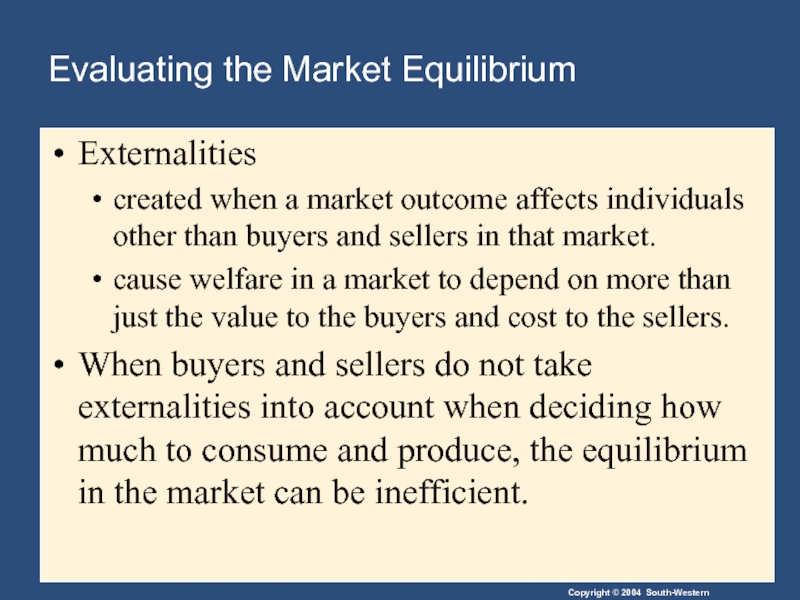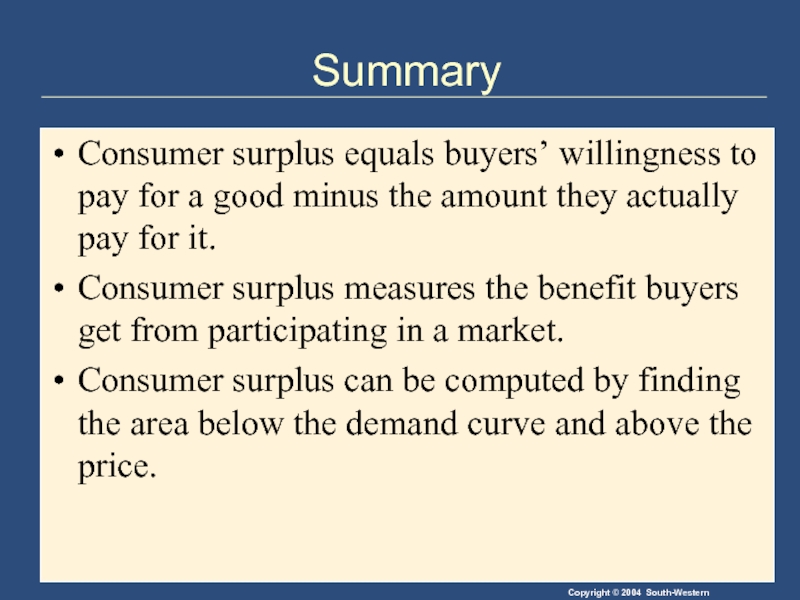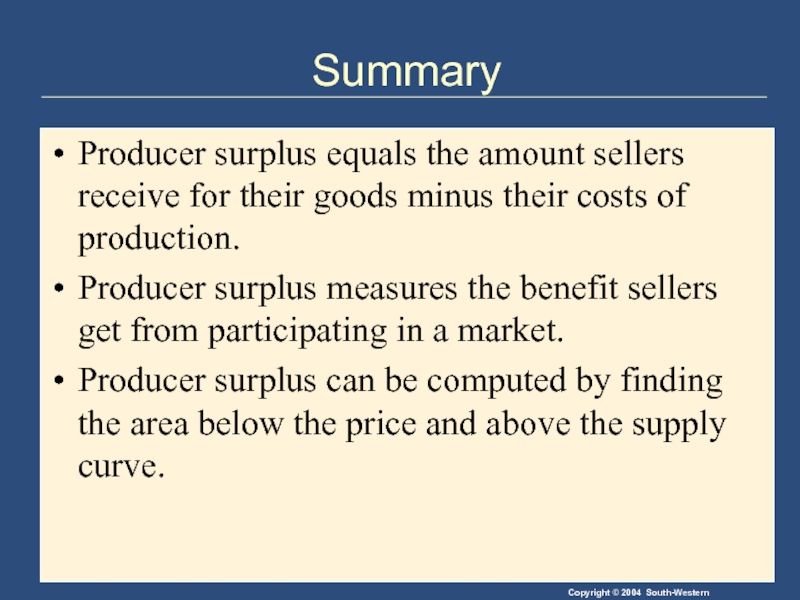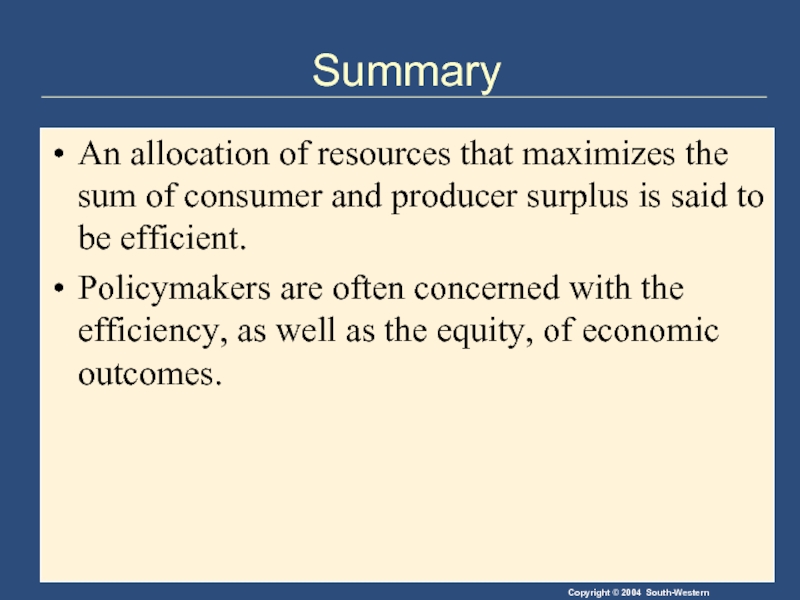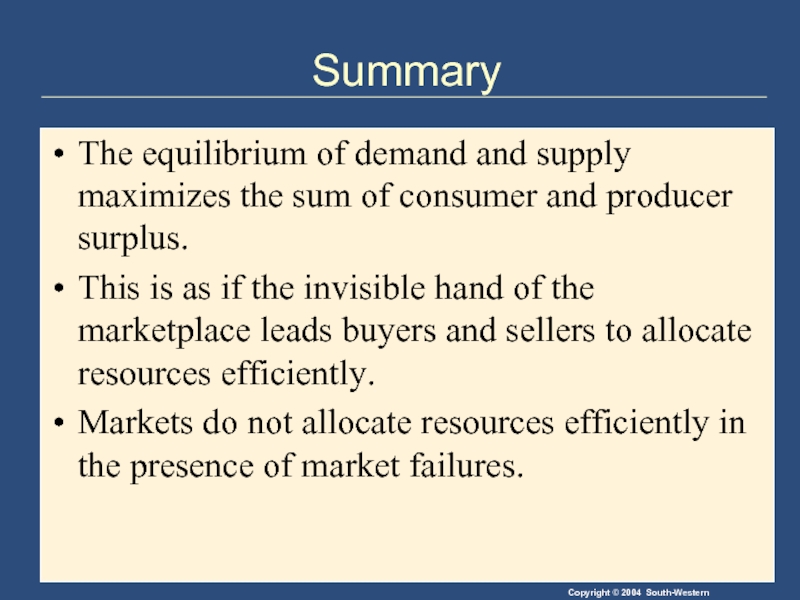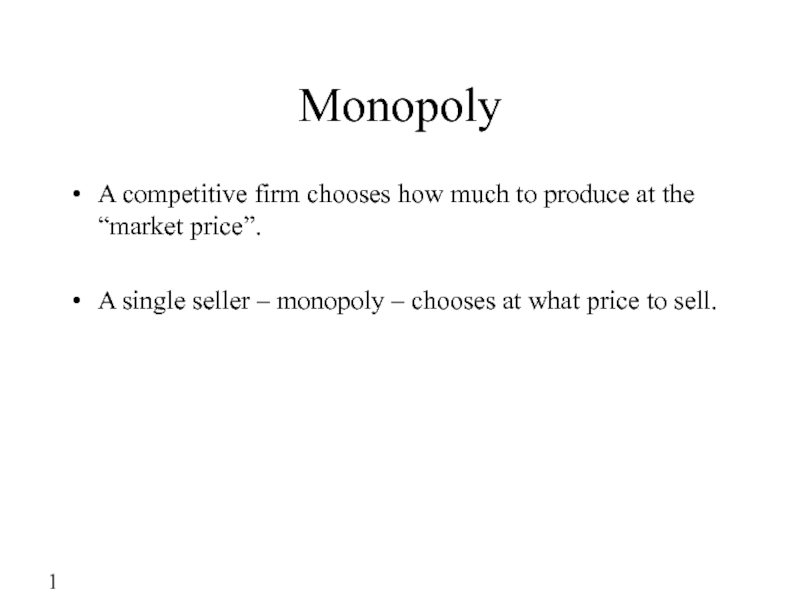- Главная
- Разное
- Дизайн
- Бизнес и предпринимательство
- Аналитика
- Образование
- Развлечения
- Красота и здоровье
- Финансы
- Государство
- Путешествия
- Спорт
- Недвижимость
- Армия
- Графика
- Культурология
- Еда и кулинария
- Лингвистика
- Английский язык
- Астрономия
- Алгебра
- Биология
- География
- Детские презентации
- Информатика
- История
- Литература
- Маркетинг
- Математика
- Медицина
- Менеджмент
- Музыка
- МХК
- Немецкий язык
- ОБЖ
- Обществознание
- Окружающий мир
- Педагогика
- Русский язык
- Технология
- Физика
- Философия
- Химия
- Шаблоны, картинки для презентаций
- Экология
- Экономика
- Юриспруденция
Consumers, producers and market efficiency презентация
Содержание
- 1. Consumers, producers and market efficiency
- 2. 7 Consumers, Producers, and the Efficiency of Markets
- 3. REVISITING THE MARKET EQUILIBRIUM Do the equilibrium
- 4. Welfare Economics Welfare economics is the study
- 5. Welfare Economics Equilibrium in the market results
- 6. Welfare Economics Consumer surplus measures economic welfare
- 7. CONSUMER SURPLUS Willingness to pay is the
- 8. CONSUMER SURPLUS Consumer surplus is the buyer’s
- 9. Table 1 Four Possible Buyers’ Willingness to Pay Copyright©2004 South-Western
- 10. CONSUMER SURPLUS The market demand curve depicts
- 11. The Demand Schedule and the Demand Curve
- 12. Figure 1 The Demand Schedule and the
- 13. Figure 2 Measuring Consumer Surplus with the
- 14. Figure 2 Measuring Consumer Surplus with the
- 15. Using the Demand Curve to Measure Consumer
- 16. Figure 3 How the Price Affects Consumer
- 17. Figure 3 How the Price Affects Consumer
- 18. What Does Consumer Surplus Measure? Consumer surplus,
- 19. PRODUCER SURPLUS Producer surplus is the amount
- 20. Table 2 The Costs of Four Possible Sellers Copyright©2004 South-Western
- 21. Using the Supply Curve to Measure Producer
- 22. The Supply Schedule and the Supply Curve
- 23. Figure 4 The Supply Schedule and the Supply Curve
- 24. Using the Supply Curve to Measure Producer
- 25. Figure 5 Measuring Producer Surplus with the
- 26. Figure 5 Measuring Producer Surplus with the
- 27. Figure 6 How the Price Affects Producer
- 28. Figure 6 How the Price Affects Producer
- 29. MARKET EFFICIENCY Consumer surplus and producer surplus
- 30. MARKET EFFICIENCY Consumer Surplus = Value
- 31. MARKET EFFICIENCY Total surplus = Consumer
- 32. MARKET EFFICIENCY Efficiency is the property of
- 33. MARKET EFFICIENCY In addition to market efficiency,
- 34. Figure 7 Consumer and Producer Surplus in
- 35. MARKET EFFICIENCY Three Insights Concerning Market
- 36. Figure 8 The Efficiency of the Equilibrium
- 37. Evaluating the Market Equilibrium Because the equilibrium
- 38. Evaluating the Market Equilibrium Market Power
- 39. Evaluating the Market Equilibrium Externalities created
- 40. Summary Consumer surplus equals buyers’ willingness to
- 41. Summary Producer surplus equals the amount sellers
- 42. Summary An allocation of resources that maximizes
- 43. Summary The equilibrium of demand and supply
Слайд 3REVISITING THE MARKET EQUILIBRIUM
Do the equilibrium price and quantity maximize the
Market equilibrium reflects the way markets allocate scarce resources.
Whether the market allocation is desirable can be addressed by welfare economics.
Слайд 4Welfare Economics
Welfare economics is the study of how the allocation of
Buyers and sellers receive benefits from taking part in the market.
The equilibrium in a market maximizes the total welfare of buyers and sellers.
Слайд 5Welfare Economics
Equilibrium in the market results in maximum benefits, and therefore
Слайд 6Welfare Economics
Consumer surplus measures economic welfare from the buyer’s side.
Producer surplus
Слайд 7CONSUMER SURPLUS
Willingness to pay is the maximum amount that a buyer
It measures how much the buyer values the good or service.
Слайд 8CONSUMER SURPLUS
Consumer surplus is the buyer’s willingness to pay for a
Слайд 10CONSUMER SURPLUS
The market demand curve depicts the various quantities that buyers
Слайд 12Figure 1 The Demand Schedule and the Demand Curve
Copyright©2003 Southwestern/Thomson Learning
Price
Album
0
Quantity of
Albums
1
2
3
4
Слайд 13Figure 2 Measuring Consumer Surplus with the Demand Curve
Copyright©2003 Southwestern/Thomson Learning
(a)
Price of
Album
50
70
80
0
$100
1
2
3
4
Quantity of
Albums
Слайд 14Figure 2 Measuring Consumer Surplus with the Demand Curve
Copyright©2003 Southwestern/Thomson Learning
(b)
Price of
Album
50
70
80
0
$100
1
2
3
4
Quantity of
Albums
Слайд 15Using the Demand Curve to Measure Consumer Surplus
The area below the
Слайд 16Figure 3 How the Price Affects Consumer Surplus
Copyright©2003 Southwestern/Thomson Learning
Quantity
(a) Consumer
P
Price
0
Слайд 17Figure 3 How the Price Affects Consumer Surplus
Copyright©2003 Southwestern/Thomson Learning
Quantity
(b) Consumer
P
Price
0
Слайд 18What Does Consumer Surplus Measure?
Consumer surplus, the amount that buyers are
Слайд 19PRODUCER SURPLUS
Producer surplus is the amount a seller is paid for
It measures the benefit to sellers participating in a market.
Слайд 21Using the Supply Curve to Measure Producer Surplus
Just as consumer surplus
Слайд 24Using the Supply Curve to Measure Producer Surplus
The area below the
Слайд 25Figure 5 Measuring Producer Surplus with the Supply Curve
Copyright©2003 Southwestern/Thomson Learning
Quantity
Houses Painted
Price of
House
Painting
500
800
$900
0
600
1
2
3
4
(a) Price = $600
Слайд 26Figure 5 Measuring Producer Surplus with the Supply Curve
Copyright©2003 Southwestern/Thomson Learning
Quantity
Houses Painted
Price of
House
Painting
500
800
$900
0
600
1
2
3
4
(b) Price = $800
Слайд 27Figure 6 How the Price Affects Producer Surplus
Copyright©2003 Southwestern/Thomson Learning
Quantity
(a) Producer
P
Price
0
Слайд 28Figure 6 How the Price Affects Producer Surplus
Copyright©2003 Southwestern/Thomson Learning
Quantity
(b) Producer
P
Price
0
P1
B
C
Supply
A
Initial
producer
surplus
Q1
Слайд 29MARKET EFFICIENCY
Consumer surplus and producer surplus may be used to address
Is the allocation of resources determined by free markets in any way desirable?
Слайд 30MARKET EFFICIENCY
Consumer Surplus
= Value to buyers – Amount paid by
and
Producer Surplus
= Amount received by sellers – Cost to sellers
Слайд 31MARKET EFFICIENCY
Total surplus
= Consumer surplus + Producer surplus
or
Total surplus
=
Слайд 32MARKET EFFICIENCY
Efficiency is the property of a resource allocation of maximizing
Слайд 33MARKET EFFICIENCY
In addition to market efficiency, a social planner might also
Слайд 34Figure 7 Consumer and Producer Surplus in the Market Equilibrium
Copyright©2003 Southwestern/Thomson
Price
0
Quantity
Слайд 35MARKET EFFICIENCY
Three Insights Concerning Market Outcomes
Free markets allocate the supply
Free markets allocate the demand for goods to the sellers who can produce them at least cost.
Free markets produce the quantity of goods that maximizes the sum of consumer and producer surplus.
Слайд 36Figure 8 The Efficiency of the Equilibrium Quantity
Copyright©2003 Southwestern/Thomson Learning
Quantity
Price
0
Слайд 37Evaluating the Market Equilibrium
Because the equilibrium outcome is an efficient allocation
This policy of leaving well enough alone goes by the French expression laissez faire.
Слайд 38Evaluating the Market Equilibrium
Market Power
If a market system is not
Market power is the ability to influence prices.
Market power can cause markets to be inefficient because it keeps price and quantity from the equilibrium of supply and demand.
Слайд 39Evaluating the Market Equilibrium
Externalities
created when a market outcome affects individuals
cause welfare in a market to depend on more than just the value to the buyers and cost to the sellers.
When buyers and sellers do not take externalities into account when deciding how much to consume and produce, the equilibrium in the market can be inefficient.
Слайд 40Summary
Consumer surplus equals buyers’ willingness to pay for a good minus
Consumer surplus measures the benefit buyers get from participating in a market.
Consumer surplus can be computed by finding the area below the demand curve and above the price.
Слайд 41Summary
Producer surplus equals the amount sellers receive for their goods minus
Producer surplus measures the benefit sellers get from participating in a market.
Producer surplus can be computed by finding the area below the price and above the supply curve.
Слайд 42Summary
An allocation of resources that maximizes the sum of consumer and
Policymakers are often concerned with the efficiency, as well as the equity, of economic outcomes.
Слайд 43Summary
The equilibrium of demand and supply maximizes the sum of consumer
This is as if the invisible hand of the marketplace leads buyers and sellers to allocate resources efficiently.
Markets do not allocate resources efficiently in the presence of market failures.
